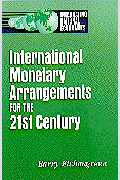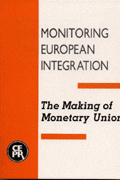Studies in this week’s Hutchins Roundup find surging demand for homes over the pandemic has driven the shortage in the housing market, the wealth of Black households increases less than that of white households after an unexpected reduction in interest rates, and more.
Want to receive the Hutchins Roundup as an email? Sign up here to get it in your inbox every Thursday.
Housing market tightness is due to increased demand rather than lower supply
During the COVID-19 pandemic, the number of homes for sale fell to historic lows. Elliot Anenberg and Daniel Ringo of the Federal Reserve Board find that, outside of a brief shock to housing supply at the beginning of the pandemic, 93% of the decrease in the monthly stock of homes for sale and nearly all of the rise in housing prices was driven by increased demand (a higher inflow of buyers as opposed to a lower inflow of sellers.) To keep the pace of housing price increases at pre-pandemic levels would have required an unusually large 20% increase in the number of new for-sale listings. Even if pandemic-related constraints on the supply of housing relax, the authors anticipate that strong demand for houses will persist, outstripping the plausible amount of new construction. In short, they expect the housing market will remain “very tight in the short run.”
Monetary policy shocks can exacerbate wealth disparities between Black and white US households
Using 2019 survey data on U.S. household wealth, Alina Bartscher from the University of Bonn and co-authors find that expansionary monetary policy shocks modestly reduce the income disparity between Black and white households, but significantly widen the wealth gap. The authors estimate that, following a 1 percentage point unexpected reduction in interest rates, the Black unemployment rate falls 0.2 percentage point more than the white unemployment rate, leading Black households to gain about $97 more per year in wages than white households. However, the increase in capital gains following the monetary policy shock is about $20,000 lower for Black households. Nearly all of the difference in capital gains is accounted for by the racial disparities in asset ownership: the median Black household holds one-tenth the wealth of its white counterpart and thus benefits less from a run-up in asset prices. The authors conclude that monetary policy cannot address racial disparities in income and wealth at the same time.
More market power makes firms less susceptible to monetary policy shocks
Romain Duval and co-authors at the International Monetary Fund find firms with more market power—as measured by the markup of prices over costs—are less responsive to unanticipated changes in interest rates than other firms, thus diluting the impact of monetary policy. Using firm-level U.S. data from 1996 to 2016, the authors estimate that one year following a 1 percentage point monetary contraction, low-markup firms reduce their output by 2% more than high-markup firms within their industry. The authors get similar results using data from 14 other advanced economies, though the effects of market power are somewhat smaller. Firms without much market power may lack the financial buffers to absorb changes in interest rates, the authors suggest.
Chart of the week: After surging earlier in the year, the yield on 10-year Treasury bonds has been falling in recent weeks
Quote of the week:
“[T]he new strategy gives us the ability to be flexible around 2% [inflation], because we recognize that 2% is not a ceiling and we recognize that there will be oscillation around 2%. It is more flexible in that we recognize the effect of the effective lower bound and the constraints that it imposes on us… And we also accept that it may imply on a transitory basis, moderate deviations above the target. So in that sense, it is more flexible,” says Christine Lagarde, President of the European Central Bank.
“[W]e also recognize the effectiveness of all the tools that we have in the toolbox. And that is not just the first and foremost and traditional tool of the ECB interest rates. But we recognize the effectiveness of those other tools that we had to invent over the course of the last 10 years, which are forward guidance, asset purchase programs, targeted longer-term refinancing operations and negative interest rates. So in that way, I’m not saying that it is more accommodative, but I’m saying that the tools are there and, if they need to be used, we recognize their effectiveness and the fact that some of them, given the effective low bound that we are close to, will have to continue being used.”
To read papers on state and local finance and the municipal bond market at our annual Municipal Finance Conference, see here.













Commentary
Hutchins Roundup: Housing market, racial disparities, and more
July 15, 2021